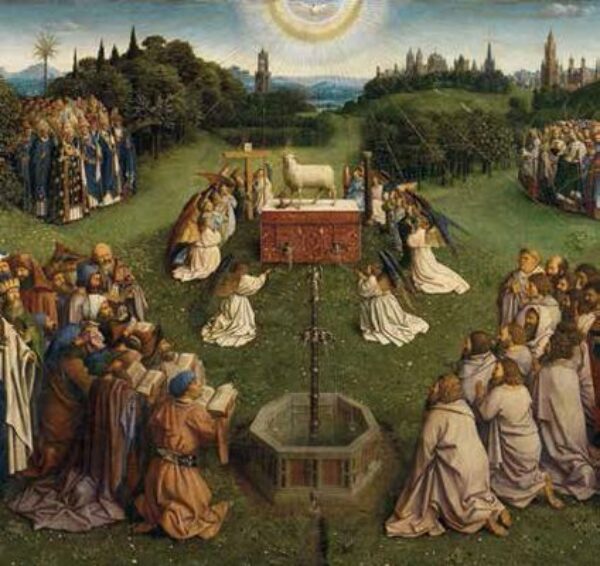The late medieval period in northern Europe – often termed the ‘Northern Renaissance’ – was one of intense invention in the visual arts: artists like the de Limbourgs, the Van Eycks, Claus Sluter, Rogier van der Weyden, Hans Memling and Albrecht Dürer created new imagery in new ways for new patrons and audiences. This course explores this exceptional production by a consideration of these works as physical objects, and as eloquent things. Its focus is on the biography of the object, rather than the artist: we will consider materiality and manufacture, technique and technical analysis, and change over time. How materials like lapis lazuli, Baltic oak, Dinant marble or red lake were acquired, transported, prepared, deployed, and imitated will be explored, as will how they might ultimately degrade, but always with an eye to how this might enlighten our understanding of meaning, be it through considerations of scale, finish, condition, provenance, authenticity (fake or fortune?), cost and value, location or use.
This approach necessitates teaching as much as possible in the presence of the things themselves – in galleries and museums, conservation departments, at art dealers, fairs or sales (we will visit Frieze Masters) and private collections in London and elsewhere. Reinterpreting any object involves asking how it was used and viewed, as well as how it was made, and we will handle works of art whenever possible to understand their weight, surfaces, and haptic properties, looking at their backs as well as their fronts, and recreating techniques through practical sessions, such as grinding pigments and painting in oil and egg. We will meet with conservators and curators at frequent points along the way who will discuss issues of restoration and display with us. A trip to either Bruges and Ghent or Paris and Dijon, depending on current events, is also a central part of the course.
This close looking and physical engagement is undertaken in parallel with a critical attention to the reading of archival sources that help place our objects in context and enlighten us as to their value, making, reconstruction or meaning: inventories, contracts, guild regulations and payment accounts, antiquarian drawings and practical handbooks. The works we will study tend to be complex in their iconography and form – designed for sophisticated viewers and to convey messages and meaning on various levels. Interpreting them involves understanding visual strategies and narrative choices – which necessitates knowing the source material for their imagery, and how it was presented at the period. This entails a consideration of contemporary devotional, liturgical and social practices: here the student will develop skills of visual and textual analysis, and use a different range of primary sources, from theology to poetry, using writers like Ludolf of Saxony and Christine de Pisan.
The course encompasses a wide variety of media alongside more famous panel paintings: metalwork (the ‘Goldenes Roessl’ made as a gift for Charles VI), manuscripts (lavishly illustrated books of Hours made in Paris c. 1400 and Bruges c. 1500), sculpture both large (Burgundian marble and bronze tombs; the lavishly polychromed ‘Well of Moses’), and small (minutely carved boxwood beads and ivory diptychs); and works made in multiple – from monumental tapestries to pilgrims badges, pipeclay figures, woodcuts and engravings. Some of these works have been the subject of significant recent restoration or technical analysis, such as the Ghent Altarpiece (full technical photographs of which are now available on-line see closertovaneyck) and the Boxwood project. The course will utilise such resources fully and ask: what can we learn from this type of technical analysis and high-resolution digital imagery? How do we interpret what we see?
Throughout the course the emphasis will be on a reconsideration of the work of art as a physical object, a process that enables us to reassess the secondary literature, and read more critically, sometimes overturning long-held ideas about reconstruction, function and meaning; this focus will also suggest new pathways that might be followed for your own independent research, with the object and its evidence leading the way. Ultimately the aim of this course is to train you in close looking and critical analysis, providing you a tool kit for research in any period of the history of art, equipping you with skills that museums, galleries and auction house particularly value. The assignments include a ‘Slow Looking’ exercise (where you have to spend at least 3 hours with one painting undertaking a close description and visual analysis) an ‘Object Biography’ (where the afterlife of a canonical work of art is traced in detail to understand how this impacted its interpretation, fame and fortune); and a ‘Mystery Object’ where a work of art that is almost entirely unknown (but is available for first hand study in a London collection) is assigned for you to investigate from scratch – to research and catalogue. Finally these various approaches are combined, ideally, into your MA dissertation, on a topic of your choice, which can be on any area of European art c. 1300-1550. A reading knowledge of a European language other than English (French, German, Spanish, Dutch or Italian) would be helpful but is not a requirement.
Course Leader: Professor Susie Nash
In the event that a course leader is on sabbatical, takes up a fellowship, or otherwise is not able to teach the course, they will be replaced by another experienced course leader either for a semester or, in some cases, the academic year.
Please note: whilst many Special Options will include site visits within the UK and further afield, these are subject to confirmation.


